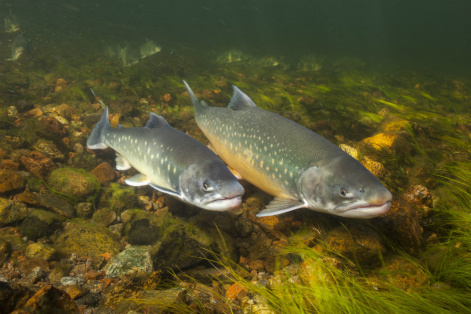A scientist of KSC SB RAS told about fish farming and commercial fishing in the water bodies of Taimyr
15 September 2020 г.

"If we are to exploit aquatic biological resources, then it is better to raise this fish in a hatchery environment, rather than release it into water bodies, where it will die of hunger. This was done in Norway with salmon, where 90% of this fish is raised, and our fish is more valuable than salmon, " says the scientist.
According to him, the northern reservoirs are oligotrophic, that is, they have a small food base, and there is little fish there. At the same time, the release of fry is possible only after the reestablishing the food base.
“We need to wait until the food supply is restored, to observe and estimate what fish species to release there, and only after that, with the accurate calculations, this should be done. In a year or two, these calculations can be made,” says Mikhail Gladyshev.
He notes that the food supply of the reservoirs around Usinsk (the Komi Republic), where there was an even larger oil spill in 1994, recovered after a year, and the number of zooplankton and zoobenthos continued growing in the following several years.
Since 1956 there has not been any commercial fishing in Lake Pyasino near Norilsk, and experts warned about possible entering of oil products after the diesel spill at the Norilsk CHP-3 in May 2020. Fishing was stopped due to the lack of commercial fish species in the lake and has not been renewed yet, says the scientist.
At the end of May, one of the fuel tanks at CHP-3, which belongs to the Norilsk Fuel and Energy Company (a part of the Norilsk Nickel MMC) collapsed due to the subsidence of the storage supports. As a result of depressurization, more than 21 thousand cubic meters of oil products spilled out of the reservoir, and got into the soil and water bodies. Of the greatest concern for ecologists was the possible entering of oil products with the polluted waters of the Ambranaya River into Lake Pyasino, which experts considered to be a valuable fishery object due to the fact that the spawning grounds of valuable fish species - nelma, muksun, whitefish, vendace - are located near the source of the Pyasina River.
"In Lake Pyasino, commercial fishing ceased in 1956. Since then, in all documents, Lake Pyasino is called non-commercial and without fish. Of course, there are valuable species of fish: muksun, peled, vendace, grayling, whitefish and broad-fish, but their quantity is scarce and there is no commercial fishing, " says Mikhail Gladyshev.
He explains that, according to the studies of the lake ecosystem, its natural conditions are not favorable for the appearance of a large number of fish; due to the shallow depth, it freezes in winter and dries up in summer.
For the first time in recent years, SB RAS has sent a large scientific expedition to Taimyr at the invitation of JSC “Norilsk Nickel” for a large-scale study of the territory. Based on its results, scientists will prepare proposals and recommendations on the best environmentally friendly solutions for the activities of industrial companies in the Arctic region.
The basins of the Pyasina, Norilka, Ambarny rivers became the main points of the expedition; Lake Pyasino was also studied. The expedition will last from July to November and scientists from 14 institutes of the Siberian Branch of the Russian Academy of Sciences are participating in it. During August, experts collected samples of soil, plants and bottom sediments, and now work will begin in the laboratories. The first results of the expedition are expected in November-December 2020.
Source: News of Siberian Science.
Share:
